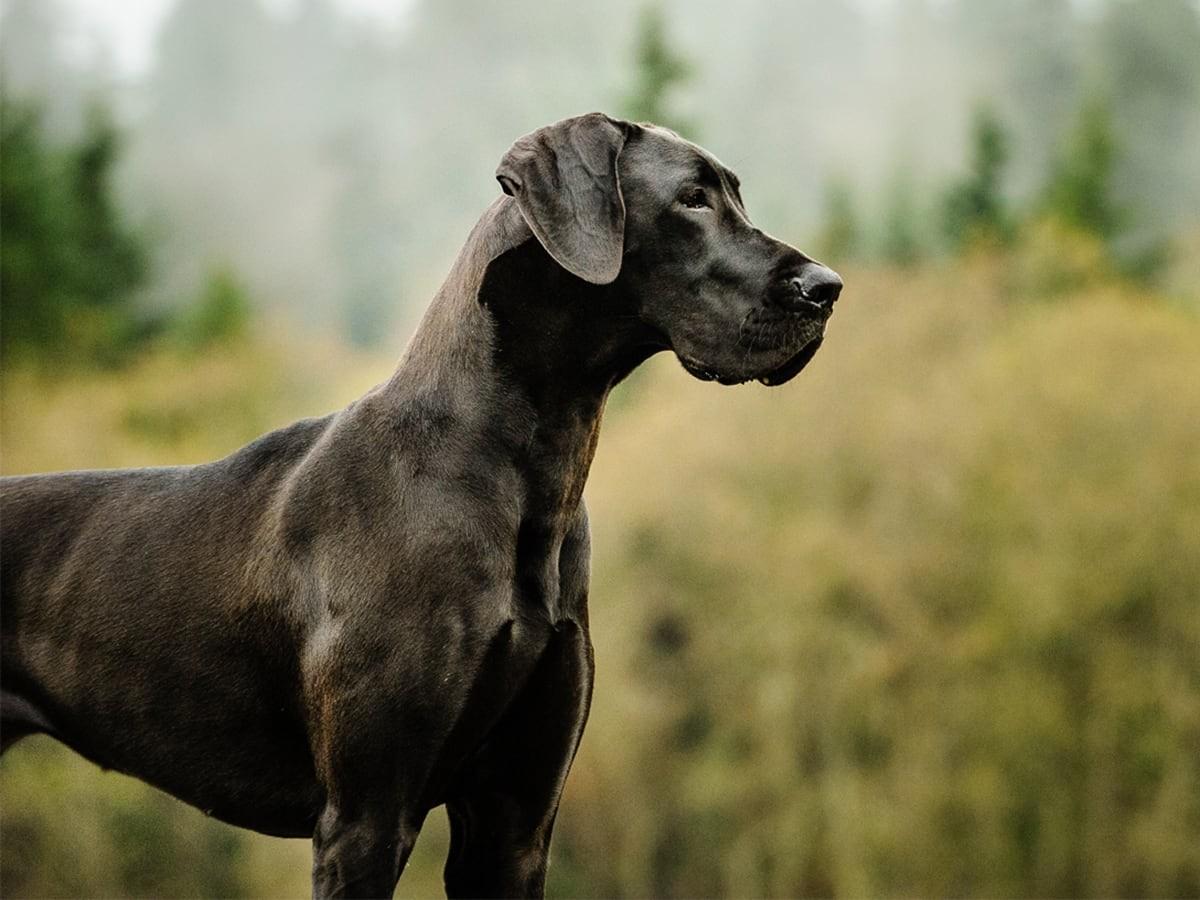When you have a Great Dane or have thought about getting a Great Dane, you may wonder about how to care for these dogs or know their common health problems.
How Long Do Great Danes Live?
Let’s get right to it. These gentle giants (originally bred to hunt wild boar!) offer the perfect friendship to pet parents. But as you probably already know, your time together will go quickly – Great Danes don’t live very long.
Great Danes live between eight to 10 years and some only live six or seven years. A few lucky Great Danes can live until age 11 or 12.
Take a look at some health problems that occur often in Great Danes and how you can recognize the symptoms.
What are Common Great Dane Health Problems?
Bloat
Canine dilated cardiomyopathy
Joint and bone diseases
Thyroid problems
Tricuspid Valve Disease
Osteosarcoma
Addison’s Disease
Bloat
Great Danes can suffer from bloat, a dangerous (and often fatal) condition in which the stomach twists and cuts off the dog’s blood supply.
Signs & symptoms:
Bloat symptoms include pacing, unsuccessful vomiting restlessness, or even panicked pawing at the stomach.
Unfortunately, if your dog makes it through bloat the first time, your Great Dane could get it again. Your veterinarian may attempt to tack the stomach to prevent it from occurring again.
Canine Dilated Cardiomyopathy
Canine dilated cardiomyopathy simply means the heart can’t generate enough pressure to pump blood through the body efficiently. The following factors contribute to canine dilated cardiomyopathy:
nutrition
infection
genetic factors
Signs & symptoms:
Look for evidence of lethargy, weakness, weight loss, coughing, increased respiratory rate, and/or abdominal distention in your Great Dane.
A veterinarian can dilate the peripheral blood vessels to decrease ventricular workload and eliminate pulmonary congestion if present. Your dog’s veterinarian will also work to control heart rate and cardiac arrhythmias if they exist.
Joint and Bone Diseases
Great Danes, as tall as 32 inches at the shoulder, experience their share of joint and bone diseases, including hip dysplasia and osteoarthritis due to their huge frames. Your Great Dane’s quality of life can deteriorate with these conditions.
Osteoarthritis occurs when the flexible tissue at the end of bones wears down and hip dysplasia occurs when the head of the femur bone doesn’t fit into the hip socket correctly.
Signs & symptoms:
Symptoms include reluctance to exercise, activity decrease, stiffness, changes in gait, and evidence of pain.
Cruciate ligament tears may also form in Great Danes, similar to ACL tears in humans. Symptoms show up through limping in the hind legs. Your vet can find these tears in the hind leg of your dog and involve surgery to fix it.
You and your vet can combat these conditions with a chewable supplement that includes glucosamine and chondroitin. Supplements may also help reduce symptoms of hip dysplasia. Your veterinarian can also do an X-ray to examine your dog’s hip sockets prior to making an appropriate treatment plan for hip dysplasia.
Thyroid Problems
Autoimmune thyroiditis commonly causes hypothyroidism in Great Danes, which means that the immune system attacks the thyroid.
Signs & symptoms:
Look for weight gain without an increase in appetite, lethargy, cold weather intolerance, dry, dull hair, and/or dark pigmentation of your Great Dane’s skin.
Your vet can monitor and regulate thyroid problems with medication and also with simple blood work.
Tricuspid Valve Disease
Tricuspid valve disease occurs when the heart valve doesn’t function correctly and the left side of your Great Dane’s heart may quit working properly.
Signs & symptoms:
Symptoms include a distended stomach, decrease in exercise, breathing problems, increased heartbeat, and/or general weakness.
Your vet can take fluid out of the heart, put your Great Dane on a low-salt diet, encourage you to control any excessive weight gain in your dog, and make sure your dog avoids exertion.
Osteosarcoma
Osteosarcoma, or bone cancer, frequently occurs in Great Danes and often proves fatal.
Signs & symptoms:
Look for lumps in various body parts, swelling, lameness, joint or bone pain, and lethargy.
Your veterinarian will take blood samples and do an examination to diagnose the disease. After diagnosis, your vet will talk with you about a course of treatment for your Great Dane.
Addison’s Disease
Addison’s disease forms when your dog suffers a decrease in corticosteroid secretion from the adrenal gland.
Signs & symptoms:
You may see a combination of lethargy, anorexia, vomiting, and muscle weakness if your dog has Addison’s Disease.
Addison’s Disease can be regulated. Your veterinarian will check and monitor sodium and potassium levels to administer mineralocorticoids and glucocorticoids.
Get Your Great Dane the Best Care With the help of Pet Insurance
Your sweet Great Dane deserves the best care you can get them.
It’s a good idea to sign up for dog insurance through Spot Pet Insurance while your dog is young, particularly if you have a breed that could be likely to develop a chronic illness or other covered condition later in life.

I've had the privilege of immersing myself in the realm of pet safety. As the owner of an energetic mini golden doodle, I know just how stressful being a pet owner can be. I am dedicated to ensuring our beloved pets enjoy a life brimming with good health.












